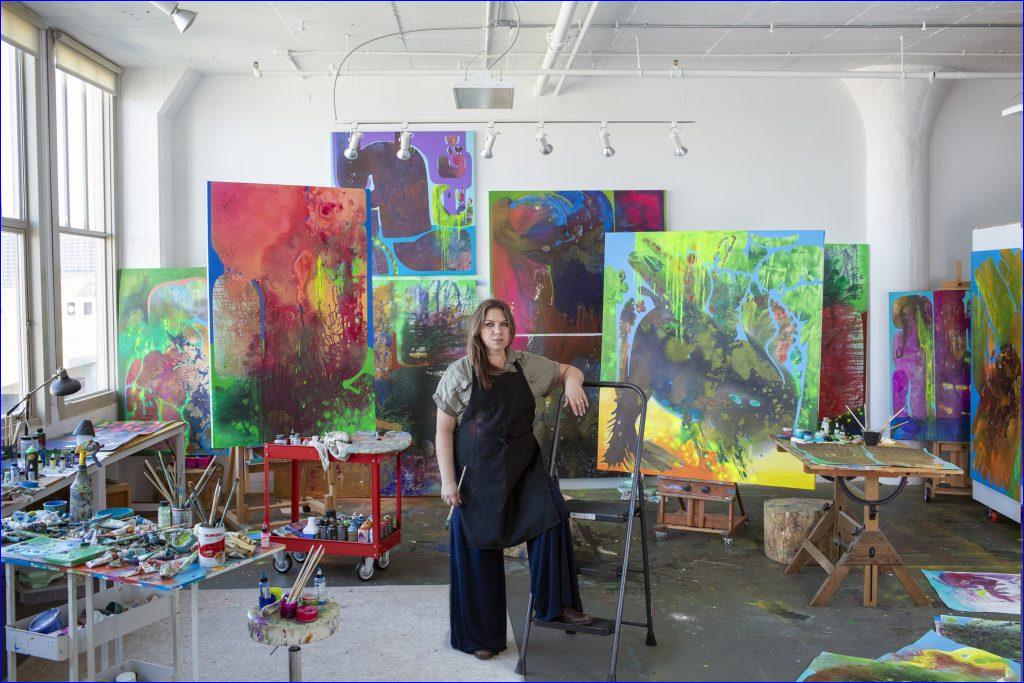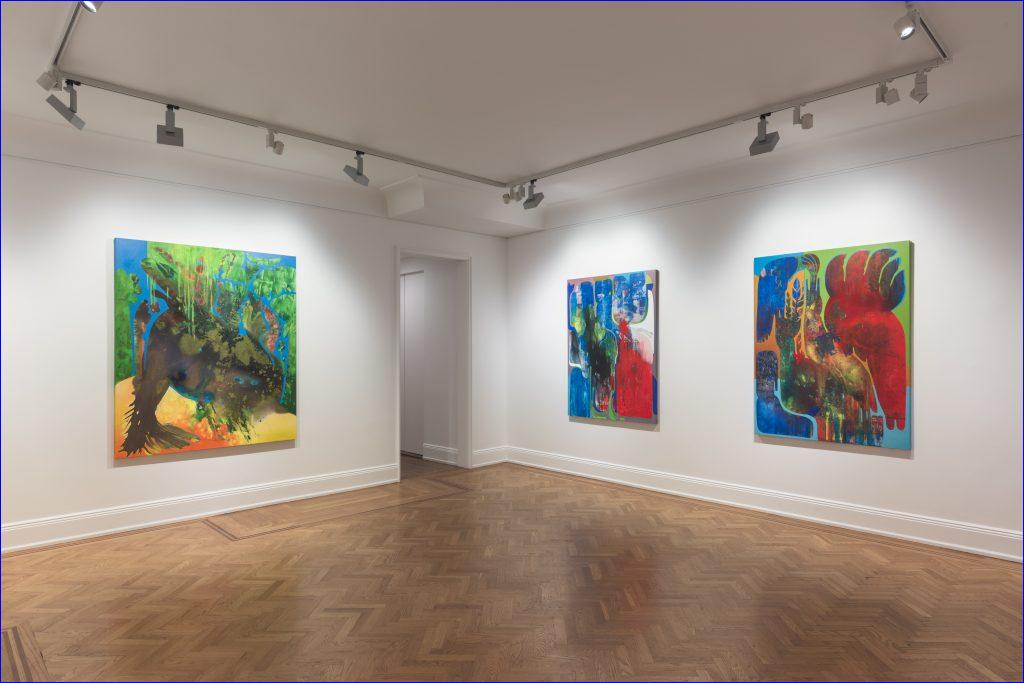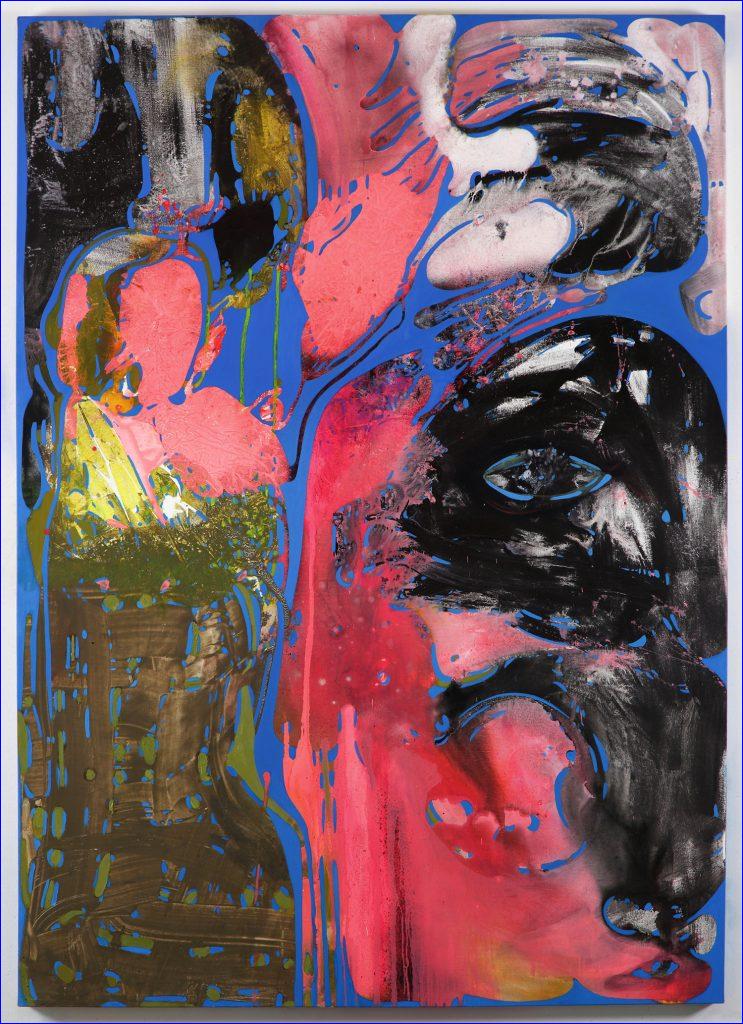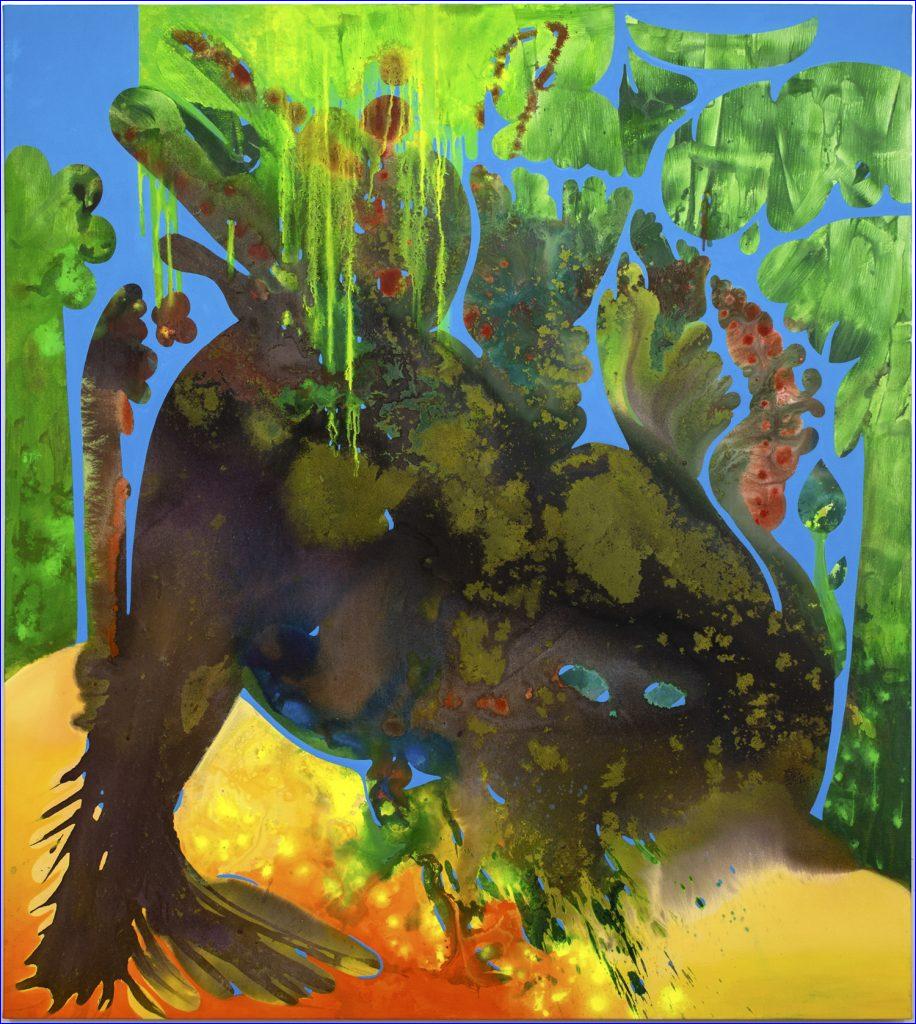


Hanging on the gallery walls are Sora's electrically colored canvases, splattered and marked in riotous, even jubilant veils of green, pink, yellow, and bright blue. Sora's works appear to be total abstractions at first. but as the eye adjusts to their bursts and fits of color, delicate forms emerge--birds, ships, lush marshlands.
"End of Hostilities" brings together both recent paintings and works on paper by the artist, made largely within the last year. Together the exhibition encapsulates both Sora's dynamic process and her narrative interests. The works operate on two levels, both impassioned and rigorously exacting.
Her works begin with an intuitive application of spray paint, acrylics, and pigments inks, all applied in active rushes. She manipulates these materials with whatever is at hand--sponges, brushes, spray bottles, even her own breath--building them into a palimpsest of paint that she, later, studiously incises. The hidden layers revealed by this process encode her works with an archeological quality. She often begins five or six works at once and each piece can take many months to complete. Pointing to one composition, the artist said: "That work has 25 to 30 layers of oil paint."

 JSP Art Photography)
JSP Art Photography)
"End of Hostilities" marks an important moment in the career of the 47-year-old artist. Sora, who was born in Baghdad to a Kurdish family, spent much of her adult life in a perpetual state of transience, moving from Baghdad to Istanbul, Dubai, London, and eventually to Louisville, Kentucky, with her husband.
This exhibition marks her long-awaited first solo exhibition in New York and also coincides with her recently announced representation by David Nolan Gallery. Coinciding with this show, she has a debut solo exhibition on view at Third Rail Gallery in Dubai, which she calls "a homecoming."
The works are often deeply autobiographical, rooted in the tragedies and beauties of Iraqi culture, and the rich histories that have been obscured by war. "I witnessed things that no one should witness," Sora said. The artist worked for the Associated Press in Iraq from 2003 to 2006. "I was covering explosion scenes immediately they happened, taking news crews there," she said. These experiences live in the works. Their chaotic and explosive early stages are, she said, her way of confronting her personal traumas, while the layering of spray paint and incisions are rooted in the renegade spirit of graffiti, an act punishable by disfigurement in Iraq.
In one painting, Verdict, an abstracted figure resembling the silhouette of a British judge in a powdered wig looms largely on the right side of the canvas, presiding over a huddled form. For Sora, the image hints at her personal dislocation, and the constant scrambling for papers and visas she needed to stay safe, with her own fate ultimately left to officials to decide.

 Vian Sora)
Vian Sora)
"The title 'End of Hostilities' is in many ways a reflection of Iraq and war. The title is a little bit mocking, the idea the U.S. is saving the world from terror. Of course, I lived in Iraq until I was 29. I left in 2006. I know that reality," she explained. "Displacement and politics are in my works, but in the end, I am saying goodnight to all that. Humanity is what prevails in my work. I exist. I have survived."
Looking at these richly colorful works in the gallery, her compositions encompass much beyond war's brutal realities. Birds, centaurs, and fertile landscapes can be spotted obliquely and these joyful, sensual images are rich in history and cross-cultural inspirations. Sora tenderly recalls moments of her childhood spent among the roses and pomegranate shrubs of her grandmother's garden in Baghdad. And in works like Oasis IV and Eden, there is an undeniable splendor.
"Some of these works show marshes from the south of Iraq from overhead, that have been destroyed. In many holy books, these lands are written about, saying it is the beginning of Eden, of paradise," she explained. "I'm imagining these places in this way which have mostly been destroyed by climate change, by man-made issues of water rights, and dams that have been built."

 Vian Sora)
Vian Sora)
"Sometimes I feel like an ancient professor trying to encourage people to look at our history," Sora said of the traditions she draws from. The artist comes from an artistic family in Iraq, the owners of a leading auction house. "I grew up surrounded by the pioneering Iraqi artists who founded the school of Baghdad. I was around architects, including Zaha Hadid." She notes that while so much work coming out of Iraq today focuses on the war, she finds inspiration in the Modernist aesthetics that shaped the nation in the 1960s, '70s, and '80s.
But she never limits herself, drawing imagery from ancient Assyria and Egypt, as well as Picasso's Les Demoiselles d' Avingnon and the works of Cecily Brown. The earliest cave paintings in the South of France are another reference. "I've been influenced by all the places I moved to and in my landscapes you see there are no borders. Borders have messed up my life," she said, "so I try to break those borders in my work."
For Sora, there is a joy to be found even in profound pain. "That's part of Kurdish culture, we will be persecuted and partying the next day," she said. In the paintings of Vincent Van Gogh, particularly, she sees evidence of art's transcendence. "You know the tragic story of this person," she said, "but when you see his work in person, it screams with joy. I want my paint and colors to do that, to scream happily that way.

or register to post a comment.